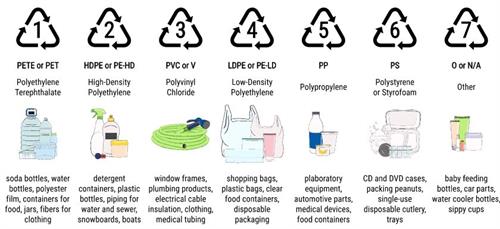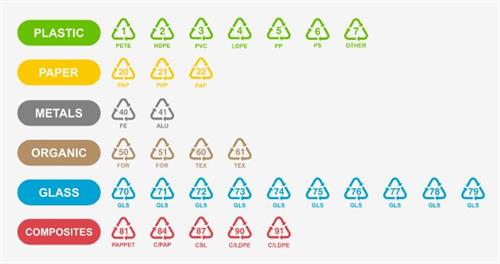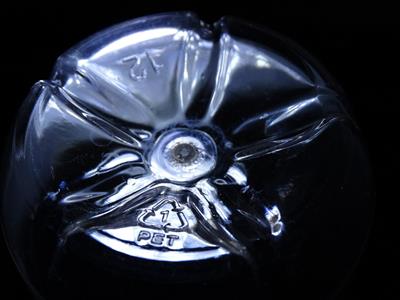
PUMPA - SMART LEARNING
எங்கள் ஆசிரியர்களுடன் 1-ஆன்-1 ஆலோசனை நேரத்தைப் பெறுங்கள். டாப்பர் ஆவதற்கு நாங்கள் பயிற்சி அளிப்போம்
Book Free Demo Plastics identification:
(a). The resin codes:
See the below pictures. Observe the code shown on it (circled). Do you know what this code means? It is called a ‘resin code’. The resin code describes the type of polymer used to make the plastic.

Various types of resin code
(b). Need for resin codes:
Plastics must be recycled or disposed of safely. Each plastic is made up of a unique polymer or set of molecules. Different polymer does not mix when plastics are recycled. It is like recycling paper and glass together.
For this reason, they need to be isolated. The resin codes of plastics were created in \(1988\) and are a simple way of classifying the various types of plastic, which help recyclers in the sorting process.

Various types of resin code
(c). Find in the resin code on plastic items:
The secret resin codes are presented as three chasing arrows in a triangle. There is a number in the middle or letters under the triangle (an acronym of that plastic type).
Sometimes this code usually is challenging to see. However, code can see it on the label or bottom of a plastic.

Various types of resin code and their examples
The resin codes range from \(1\) to \(7\). Resin codes \(1\) to \(6\) each identifies a specific type of plastic used in products. Since \(1988\), resin code \(7\) has been used for any other plastic that does not fit into the first six categories. The resin codes resemble the recycling symbol, but this does not indicate that they are recycled plastics.
(d). Where will the resin code be shown on plastic items?
- Flip the plastic item to see the resin code on the bottom.

Resin code on the water bottle
- Sometimes the bottom of the plastic item will only have an acronym or full name of the plastic-type.
- If you can't see it on the bottom, look for the code on the label.
Some plastics are unlabeled. The company did not follow the rules, and you have no idea whether it is safe to use.